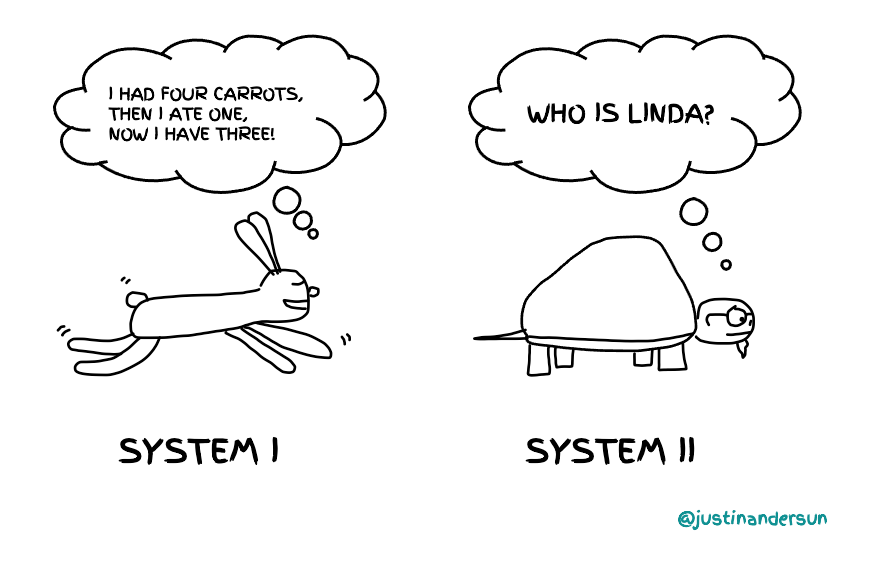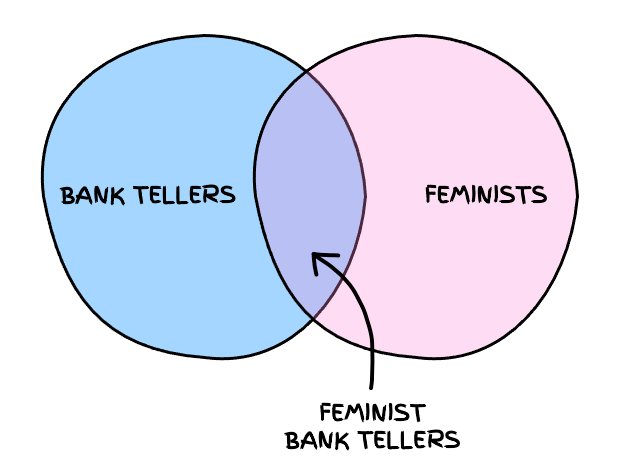22 May 2022
System I & System II
Here’s a puzzle: Linda is 31 years old, single, outspoken, and bright. She majored in philosophy at an American university. As a student, she was deeply concerned with discrimination and social justice issues. Which is most probable?
- Linda is a bank teller.
- Linda is a bank teller and active in the feminist movement.
- Linda is a Supreme Court Justice.
- Linda is an eye doctor aiding underserved communities in Ghana.
Daniel Kahneman, a Nobel Prize-winning economist, presented a question like this in Thinking, Fast & Slow. Before I reveal the answer to the above question, let’s explore Kahneman’s seminal idea of System I and System II thinking.
System I is fast thinking. Because this is Turtle’s Pace, let’s imagine a rabbit. System I is automatic, unconscious, and uses heuristics to make quick decisions. We use System I for solving basic problems like 4-1, brushing our teeth, driving a car on an empty road, reading text on a billboard, or understanding simple sentences. System I conserves mental energy, so you can bounce along like a rabbit.
System II is slow thinking. Picture a turtle—arduously crawling through the dirt. System II requires effort, conscious thought, and rationality. We use System II for complex scenarios: parking in a tight space, solving 38×24, determining appropriate behavior in a social setting, or solving a peculiar logic puzzle. System II helps us arrive at more nuanced, accurate decisions, but it consumes a lot of energy.

If you used System I, you likely selected 2. Linda is a bank teller and active in the feminist movement. That’s because your brain made cognitive shortcuts about Linda’s story—if she was outspoken and passionate about social justice in college, she must be active in feminism today. Humans love stories, so it’s natural for narratives to guide our thinking. But they aren’t always accurate.
If we use System II, we can better understand the scenario. First, the question asks, “which is most probable?” Thinking in terms of probability can narrow our options.
- Most people know there are only nine Supreme Court Justices, so it’s highly improbable for answer 3 to be correct.
- Most people could rationalize that there are far more bank tellers than eye doctors in the U.S. (364K tellers and 39K optometrists in 2021, according to the Bureau of Labor Statistics). Coupled with the specifics (eye doctors working in Ghana), it’s clear that answer 4 is also improbable.
- Where System II shines is differentiating between answers 1 and 2. Let’s consider a Venn Diagram:

1. Linda is a bank teller.
We spend much of our time in System I to conserve energy, and that’s good. But for the handful of daily scenarios that require deep, careful thought—slow down and deploy the turtle (System II).